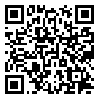BibTeX | RIS | EndNote | Medlars | ProCite | Reference Manager | RefWorks
Send citation to:
URL: http://jcpp.iut.ac.ir/article-1-2455-en.html
One of the main problems of Shiraz city’s green space is the change of color and visual quality of turf during cold months. Therefore, we aimed to evaluate tall fescue in order to find if it is suitable for replacement. This experiment was in the form of complete random blocks and it was done during two consecutive years. Each treatment had 4 repetitions. Data were analyzed using SPSS software, version 16.0, and the means were compared using t or LSD tests at a significance level of 5%. The results showed that tall fescue was superior to normal sport grass in cold months with respect to its chlorophyll, catalase, protein, prolin, and soluble sugar content, as well as its visual quality and root depth. Prolin fluctuations in tall fescue were very high which showed that these types of grass can increase the plant’s prolin content under stress. Therefore, there is a fivefold increase in the prolin content of the grass in cold months (cold tension) compared to the beginning of spring (best condition for growth). However, this change does not exist in sport grass. Based on the obtained results we can conclude that tall fescue can resist environmental tension, especially coldness, using different mechanisms, and is a good substitute for normal sport grass.
| Rights and permissions | |
 | This work is licensed under a Creative Commons Attribution-NonCommercial 4.0 International License. |







